The horse boots are the protective boots that prevent the lower legs and hoof from damage or injury. Your horse needs different types of horse boots in many situations. Horse boots are designed to protect the sensitive structure of the hoof. I have highlighted ten types of horse boots for your easy understanding in my article. You can choose any one of the boots suitable for your horse’s comfort.
What are the Different Types of Boots for horses?
Different horse boots are essential to prevent your horse’s lower leg or hoof from experiencing trauma. These include:
- Brushing Boots.
- Bell boots.
- Fetlock Boots.
- Overreach Boots.
- Tendon Boots.
- Cross-country Boots.
- Turnout Boots.
- Magnetic Boot.
- Hoof Boots.
- Therapeutic Boots.
- Travel Boots.
- Stable Boots.
- Splint Boots.
- Shipping Boots.
- Fly Boots.
- Skid Boots.
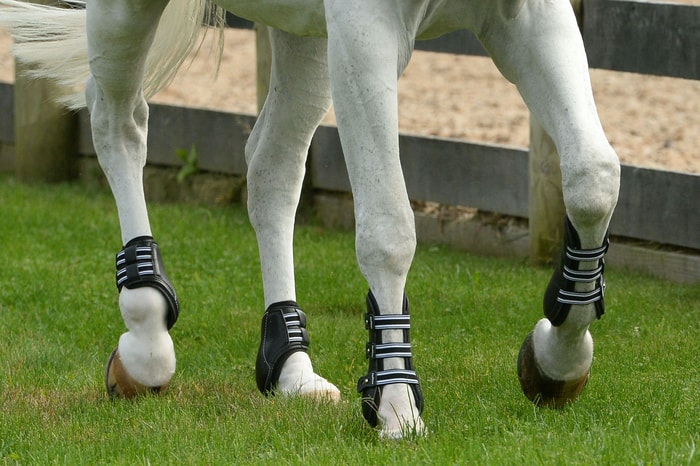
1. Different Types of Horse Boots: Brushing Boots
Very few horses are straight, and most will brush or dish slightly. A horse will brush because of his static conformation when the skeletal system is not moving or his dynamic conformation when the limbs are in motion.
A horse with slightly toe-out or cow-hock confirmation will usually brush. Brushing boots will help prevent self-inflicted injuries from the other limb. Many people use them as a standard tack, but he may need coronet boots if a horse brushes low down.
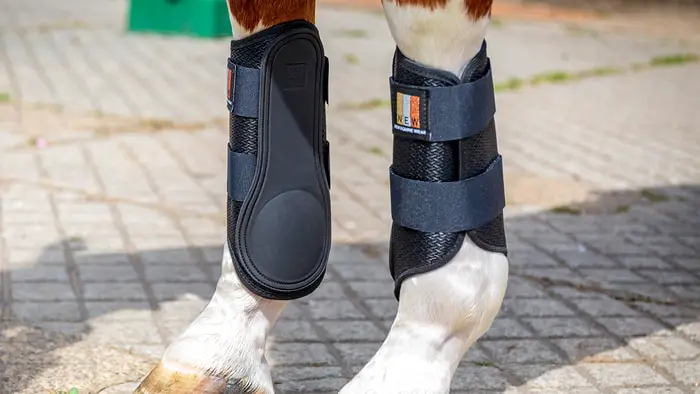
Brushing boots are mainly worn for flatwork, hacking, or turning out; forgive as much protection to the front legs as tendon or cross-country boots. A fast-cut boot would be better if a horse tends to strike his knee or hock as it protects higher up the leg.
If your horse’s shoes are striking each other, talk to your farrier about the best type of shoes to prevent this from happening. Typically, the farrier will round off the inside edge of the shoes to help stop them from brushing together.
2. Fetlock Boots
Fetlock boots, also known as quarter boots, are a shorter alternative to brushing boots and are worn on the hind fetlocks to protect the joint. Experienced riders often use them for showjumping to encourage the horse to be careful. They can be worn for hacking and light schooling but not for cross-country as they do not provide enough protection around the cannon bone and tendons.
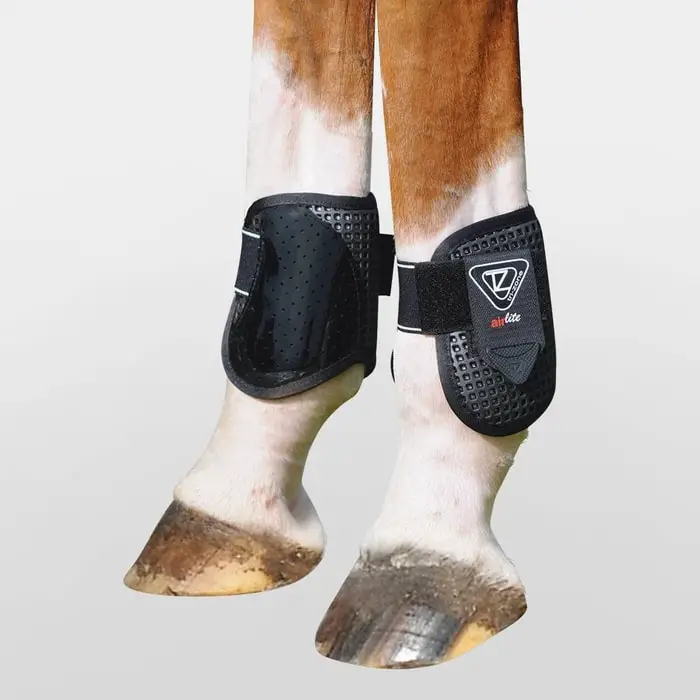
3. Types of Horse Boots: Overreach Boots
Overreach boots fit over the coronet and heel to protect the horse’s foot. Horses are more likely to overreach- strike into the back of a front foot with the front of a back one. When jumping lungeing, in transit, or muddy conditions, this can lead to a nasty injury. If your horse forges the clicking, you can sometimes hear when the back shoes hit the front shoe, he is more susceptible to an overreach.
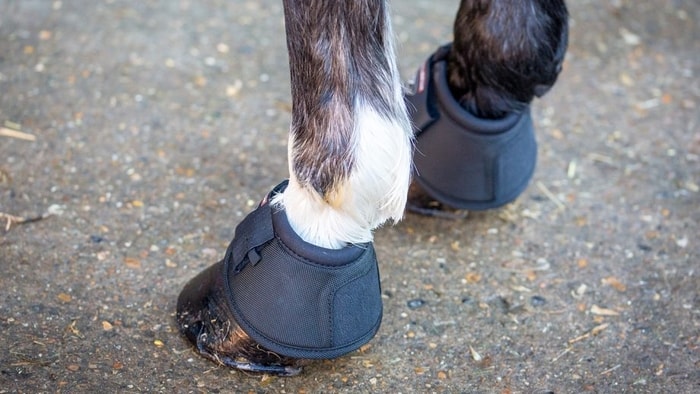
Overreach boots come in various designs; the most common is a simple, one-piece rubber bell, which can be fiddly to put on. Boots with touch-and-close or strap fastenings are also available but tend to be more expensive than the rubber bell type. Petal overreach boots with rows of ‘petals’ attached to a strap that fastens around the pastern are also available, although this type makes a flapping sound that takes some getting used to. Whichever style you choose, make sure the boots are not too big, or the horse might trip over them.
4. Putting on Overreach (Bell) Boots
Turn the boot inside out and pick up the horse’s front foothold it between your knees like a farrier does so that both your hands are free. Alternatively, hold the hoof with one the other. Pull the boot over the foot, and toe first.
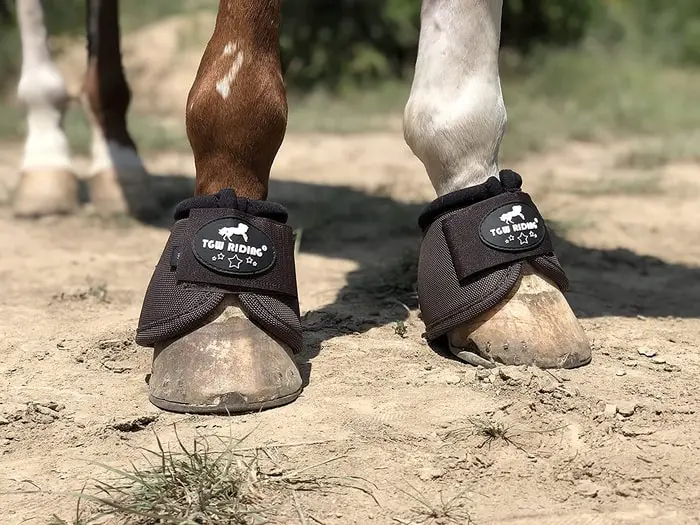
Once the boot is in place, turn it the right way out. To take the boot off again, grab the top and pull it down so that the boot slides off over the bulb of the heel first.
5. Types of Horse Boots: Tendon Boots
Tendon boots are designed to protect the tendons at the back of the horse’s foreleg from being struck into by the hiding when showjumping. Contrary to what many people think, tendon boots are not intended to support the tendon.
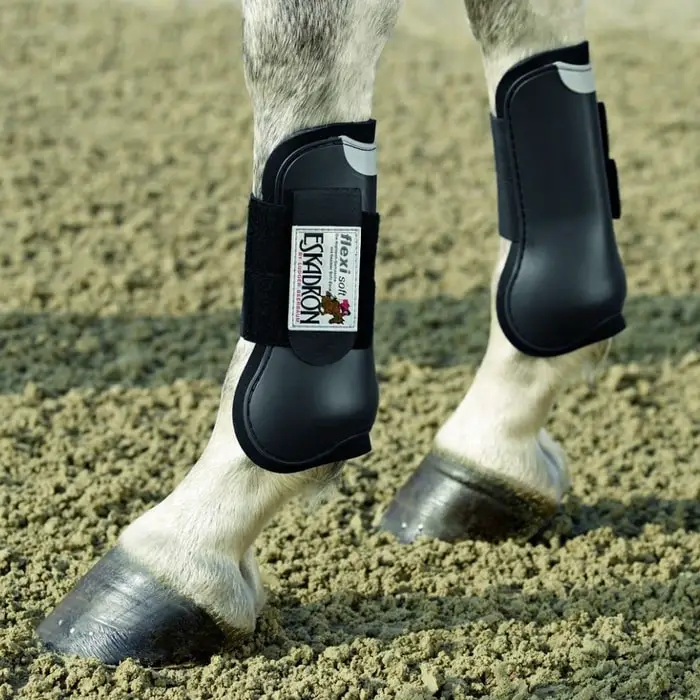
When buying tendon boots, look for designs with a cut-away or flexible area behind the knee to ensure no restriction on the horse’s ability to flex fully while jumping.
6. Cross-country Boots
The correct protective equipment for your horse is vital when riding cross-country. His legs are most vulnerable- he could hit a fence, strike himself, or overstretch a tendon or ligament while competing. Cross-country boots offer protection against these injuries.
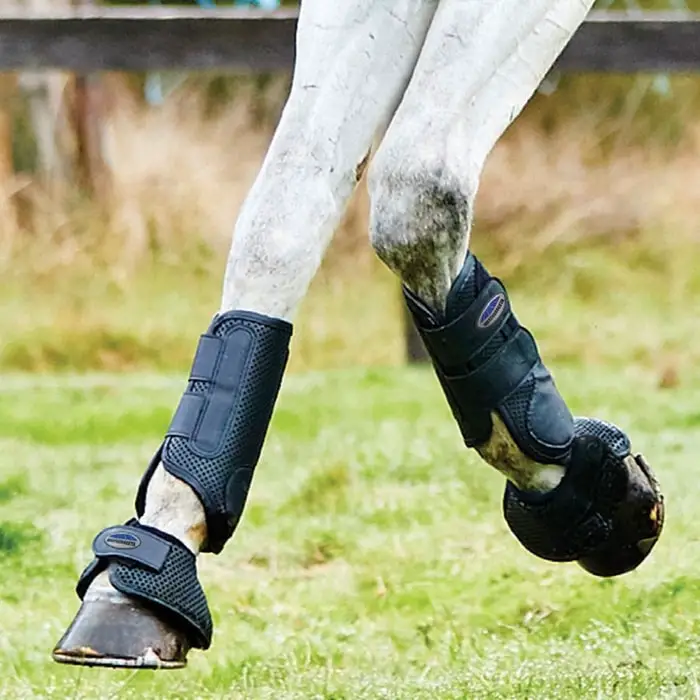
There are different schools of thought on how much protection boots should provide. Some say you should protect the horse’s legs completely with boots reinforced in the vulnerable areas. Others say the horse needs only minimal protection to know what it feels like to hit a fence and therefore respects it and jumps carefully, and some boots are designed with this in mind.
When a horse gallops or lands after a fence, his fetlock joint extends to its limit, touching the ground in some cases. Specific designs of boots help reduce the tendons over-extending and protect the fetlock from a concussion and bruising.
7. Different Types of Horse Boots: Turnout Boots
Turnout boots are a relatively new idea. They aim to protect the horse’s legs from bashes and bangs in the field. They also keep the legs clean, preventing the onset of mud fever in wet and muddy conditions. To provide complete protection, the boots need to mold to the shape of the horse’s legs and cover as much of the leg and heel area as possible.
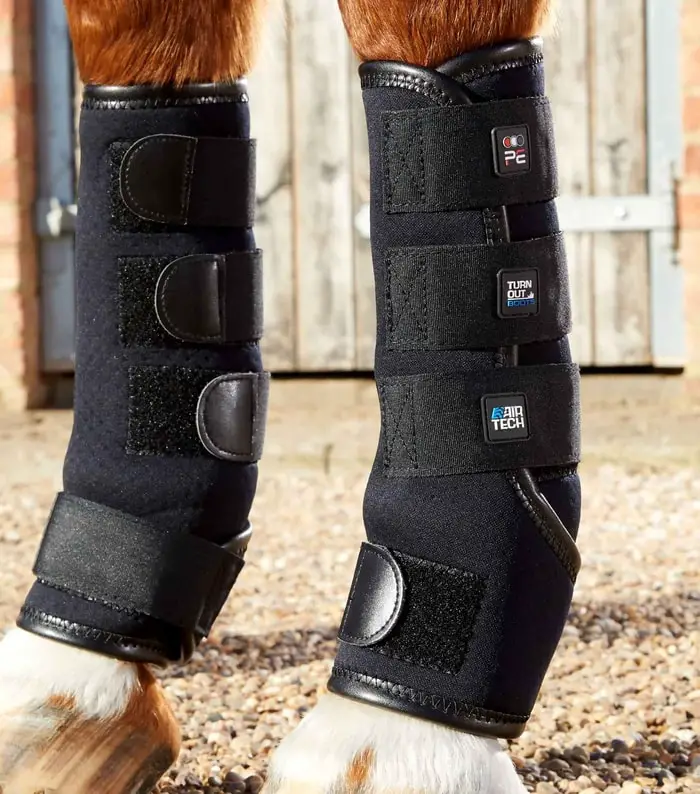
If your horse suffers from mud fever, ensure his legs are clean before using turnout boots; otherwise, the infection may worsen.
8. Magnetic Horse Boots
Magnetic therapy is thought to improve blood flow to and from a painful area. It is believed to bring oxygen-rich blood to an injured area. And carry away any infected material, although there is no conclusive scientific evidence to prove that magnetic therapy has a positive effect.
Magnets are usually built into magnetic boots and wraps and are designed to sit next to the significant blood vessels-usually on the horse’s legs, to encourage blood flow.
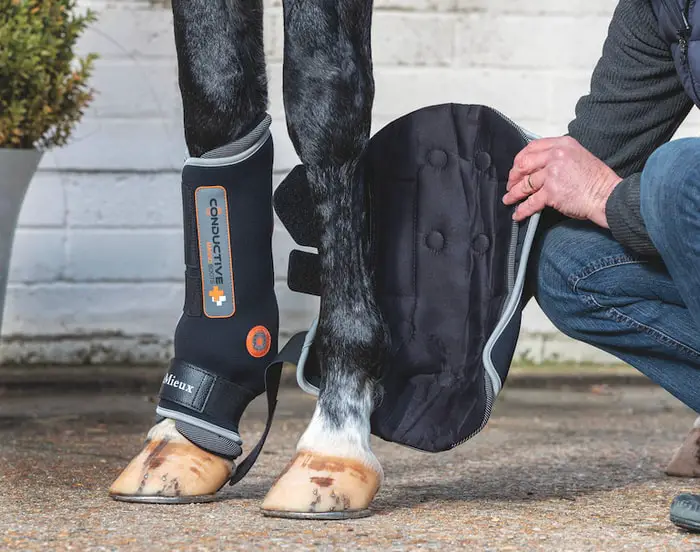
Some allow you to fix the magnets in a chosen place and target specific areas. Magnets can help relieve stiffness, improve circulation and disperse swellings. Particular conditions that boots and wraps are believed to help include splints, tendon injuries, suspensory ligament injuries, arthritis, hock and knee damage, windgalls, and laminitis.
9. Types of Horse Boots: Hoof Boots
Hoof boots are used to protect the hoof and soles. These boots are used temporarily during any medication or surgical treatment. Hoof boots are used during all riding disciplines. Hoof boots are also used instead of horseshoes.
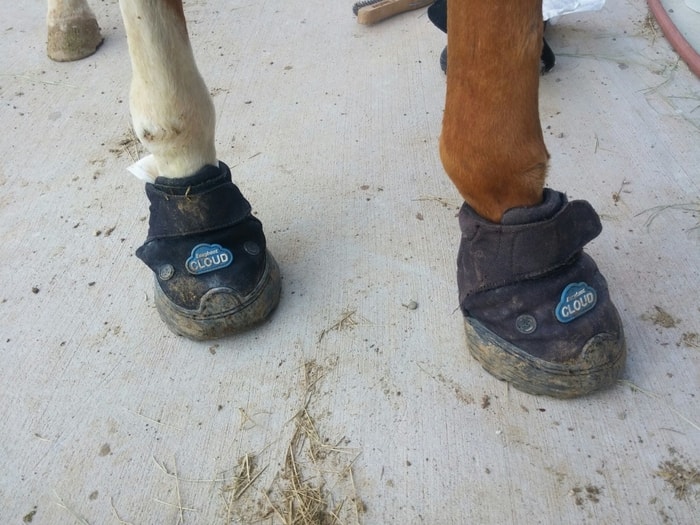
10. Therapeutic Horse Boots
Therapeutic horse boots are boots that are used to heal hoof injuries faster. These boots wrap legs are hoofs with antiseptics and medications. Therapeutic boots protect injured hooves from specks of dirt and infections.
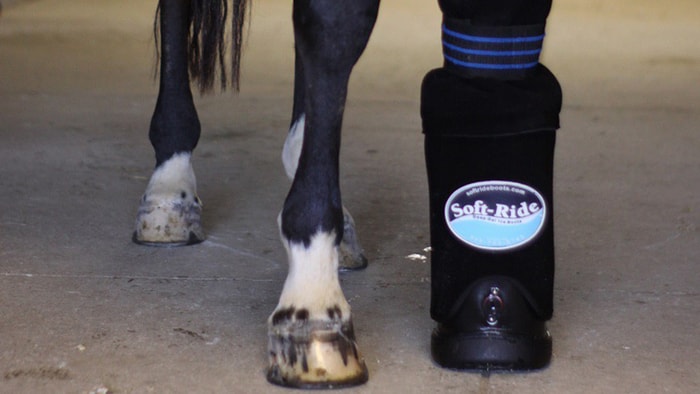
11. Travel Boots
Travel boots protect lower legs, hocks, and hooves during traveling on a trail or endurance riding. The travel boots are easy to wear than hoof bandages. Travel boots give a comfortable fit for the horses.
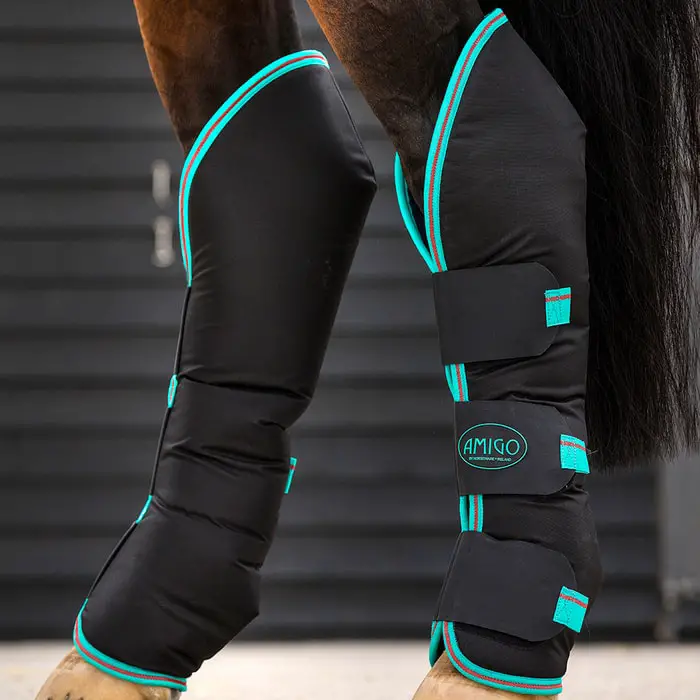
12. Types of Horse Boots: Stable Boots
Stable boots are not so popular. The boots are primarily used as pillow wraps over the lower legs and protect during the horse’s stay at the stable.
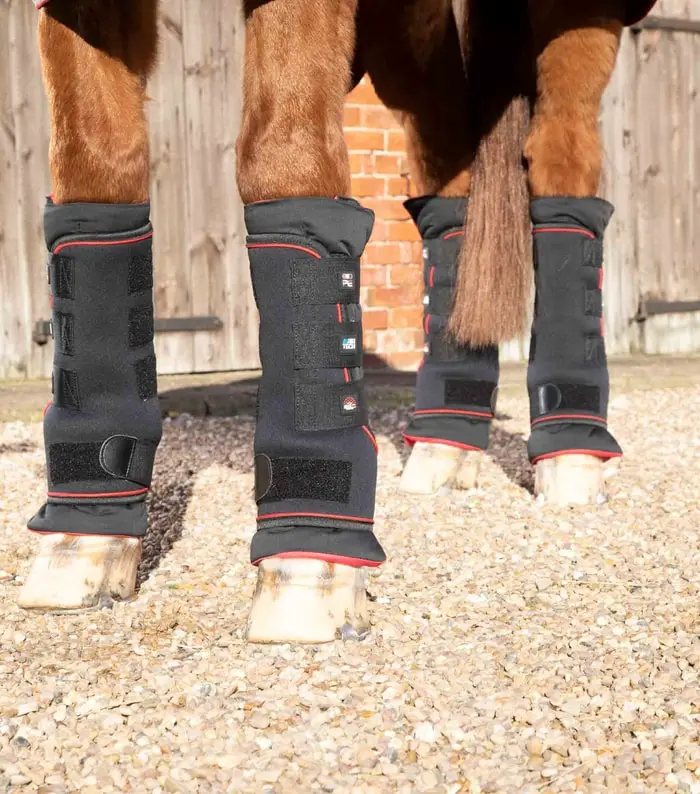
13. Splint Boots for Horse
Splint boots are soft horse boots used on the lower legs. The splint boots fit at the canon bone and tendons between the hock joint. Splint bone, and fetlok joint. They protect mainly the brush injuries of the horse.
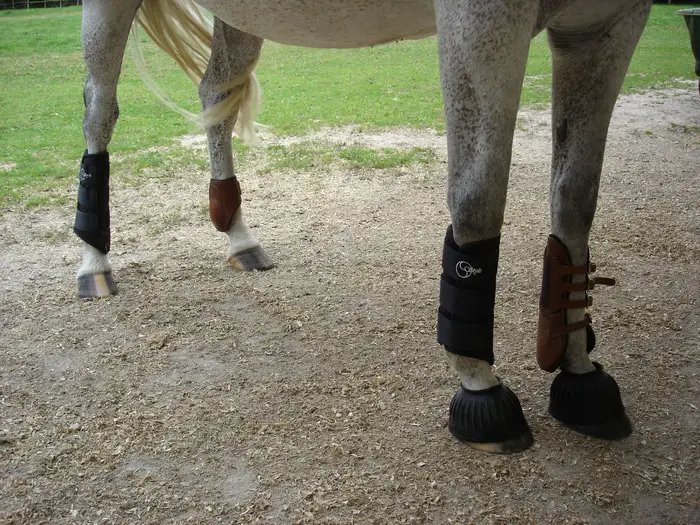
14. Types of Horse Boots: Skid Boots
Skid boots are short and usually protect the rear of the fetlock joint. The shoes are generally seen in western riding as the horses demonstrate a sliding stop. Some long skid boots cover the entire lower legs.
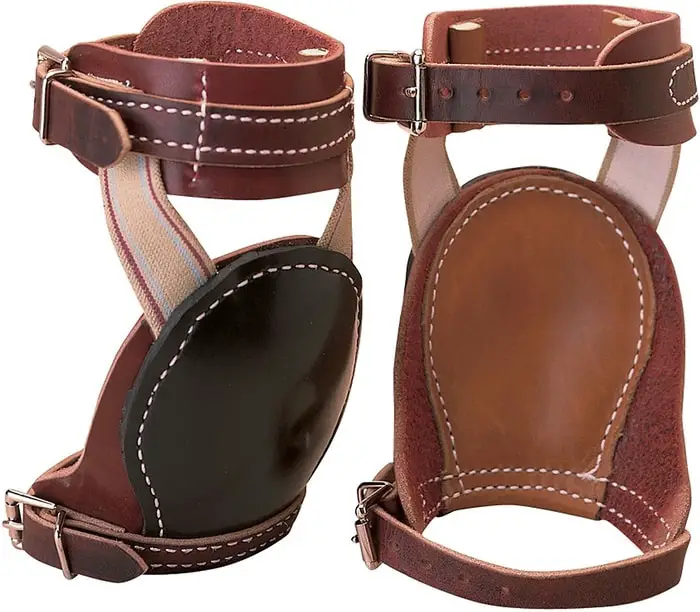
15. Fly Boots for Horses
Fly horse boots are like as stable boots. The shoes have breathable materials. The fly boots protect flies and mosquitoes from biting the horse’s lower legs.
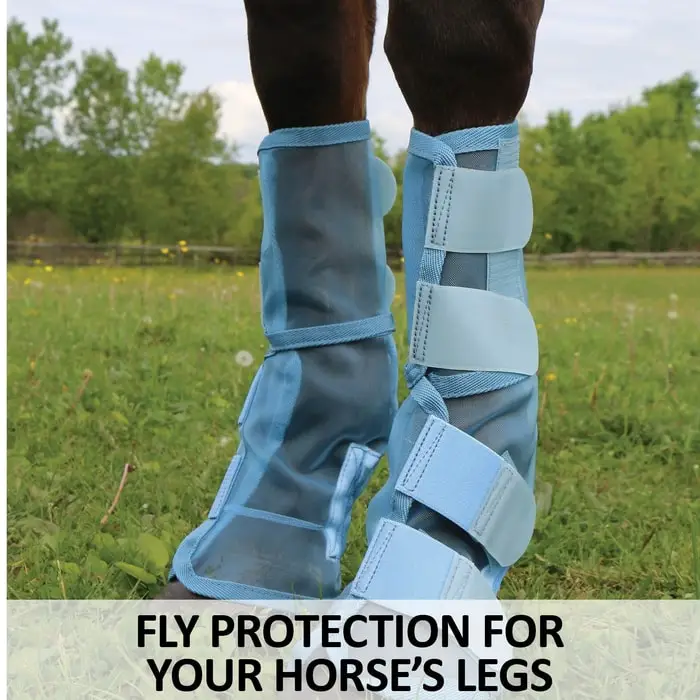
Concluding Remarks on Types of Horse Boots
Horses are fit if the legs are fit. Horse boots protect the lower legs and hooves from any injury. Horse boots are of different types, sizes, and shapes. In my article, I have discussed fifteen different types of horse boots. You can choose anyone that is best suited for your horse’s needs.